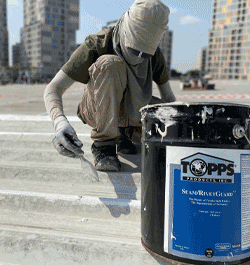UP TO THE MINUTE
How Companies Can Respond to the Delta Variant

By Cotney Attorneys & Consultants.
Employers will need to continue to be flexible, adaptive and creative in their approaches to COVID-19.
Pretty much no one in the United States has been able to get by without feeling the effects of the COVID-19 pandemic. And now, on top of that, there is the highly contagious Delta variant and probably more to come.
The Delta variant has caused the hospitalization of the unvaccinated to skyrocket, and it is even hitting communities with high vaccination rates. Expect sporadic cases and periodic outbreaks in the future. Knowing this, how do employers protect workers and customers and still fulfill their business obligations? How do businesses grow under these circumstances?
The good news is that employers have already been working to keep infections in check at the workplace. However, they will need to continue to be flexible, adaptive and creative in their approaches to contain the threat as time marches on.
Consider these broad measures.
Encourage employees to get vaccinated
There is scientific proof that vaccinations are the best way to prevent serious illness, hospitalization, and even death resulting from COVID-19. The overwhelming majority of employers are communicating the importance of vaccines to their employees. That is especially important because employees will consider their bosses as trusted sources of information about the pandemic.
To do this effectively, incorporate stories and statistics. Make your communications culturally appropriate. Have diverse influencers help spread the message.
More than half of employers are offering time off to employees so they can get a vaccine. Some even offer financial incentives for those who get vaccinated.
Determine whether to mandate vaccines
As the Food and Drug Administration gives full approval of the various COVID-19 vaccines, this will likely lead to more employers mandating that employees get vaccinated. For now, most of the mandates are in education and healthcare but expect that to change.
When considering return-to-office, look at local transmission rates
The risk of your employees becoming infected correlates with the rate of community infection. If the current infection rate is low, businesses can feel more comfortable asking people to return to the office. Conversely, if the infection rates are growing, consider delaying return by keeping the number of in-office employees low.
Use social distancing to reduce exposure
Even as employees return to the office, many employers are staggering shifts and encouraging social distancing. For example, only provide two chairs if you want only two people in a conference room at once.
Improve office ventilation
Building ventilation can impact coronavirus transmission. Increasing the amount of air exchanged indoors decreases the transmission rate in the workplace. Improving ventilation can be done by adding air exchanges and improved filtration systems. At the very least, open some windows.
When to require masks
The U.S. Centers for Disease Control and Prevention recommends that everyone wear a mask indoors with others. Those who are immune-compromised should certainly wear well-fitted masks indoors. Expect indoor mask mandates to expand with increased infection rates.
Consider holding off on travel
If possible, continue to hold off on business travel. More contagious variants mean leaders should err on the side of caution.
Learn more about Cotney Attorneys and Consultants in their RoofersCoffeeShop® Directory or visit www.cotneycl.com.



















Comments
Leave a Reply
Have an account? Login to leave a comment!
Sign In